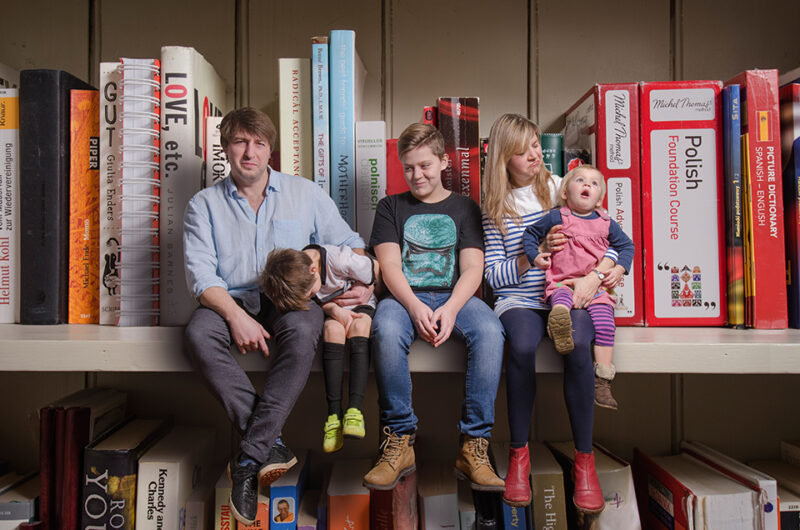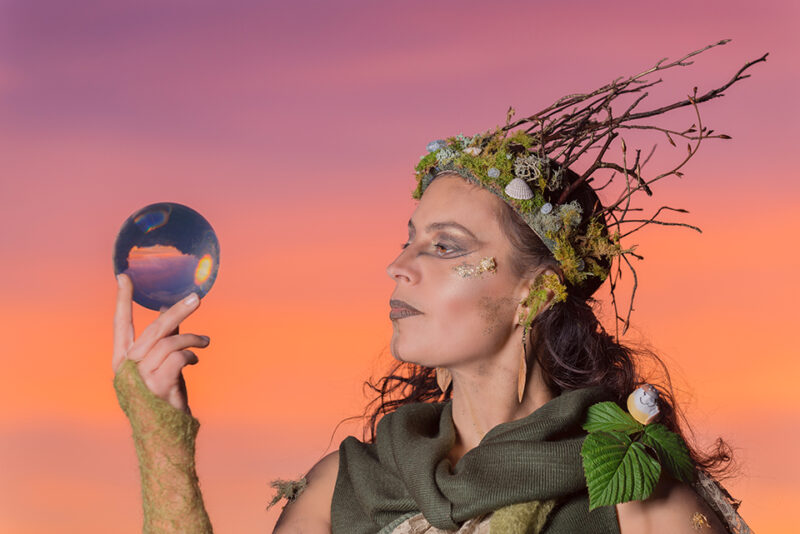“If we’re free from the burden of trying to be completely original, we can stop trying to make something out of nothing, and we can embrace influence instead of running away from it.” … Austin Kleon in “Steal Like an Artist”
In the spirit of this quote, I’ve been looking at Pinterest a lot lately for inspiration. In the midst of some random searches, I came across some pictures of marbles. And I thought it would be fun to experiment with that subject.
A few days later, an amazon delivery person showed up with a couple of marble jars. Because of the translucent nature of many of them, I first experimented with some backlight. But just simply backlighting these marbles wasn’t doing it for me, and I got the idea of putting each marble in an aluminium can. This way I got a reflection as well as the backlighting effect.
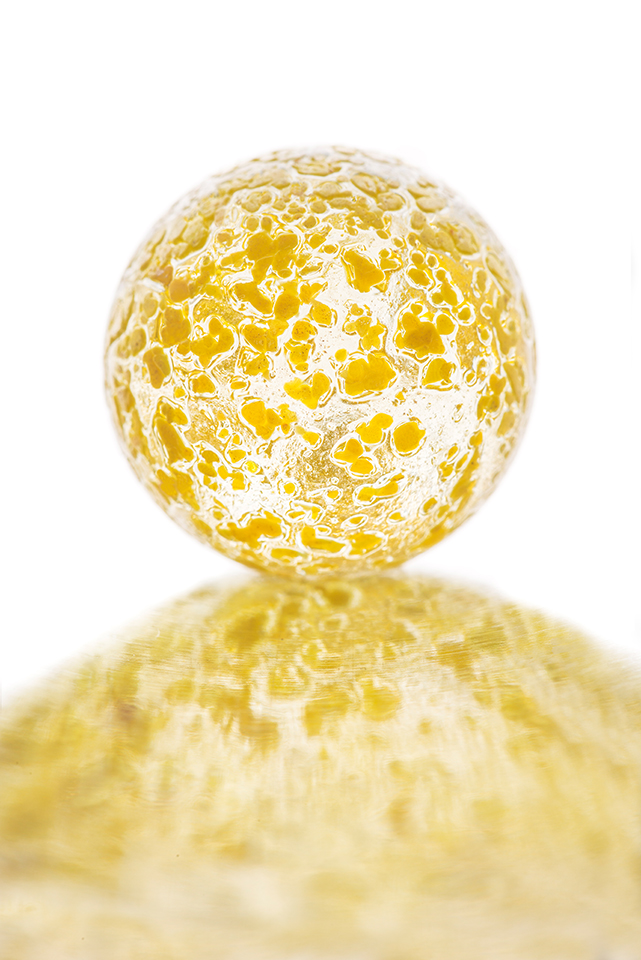
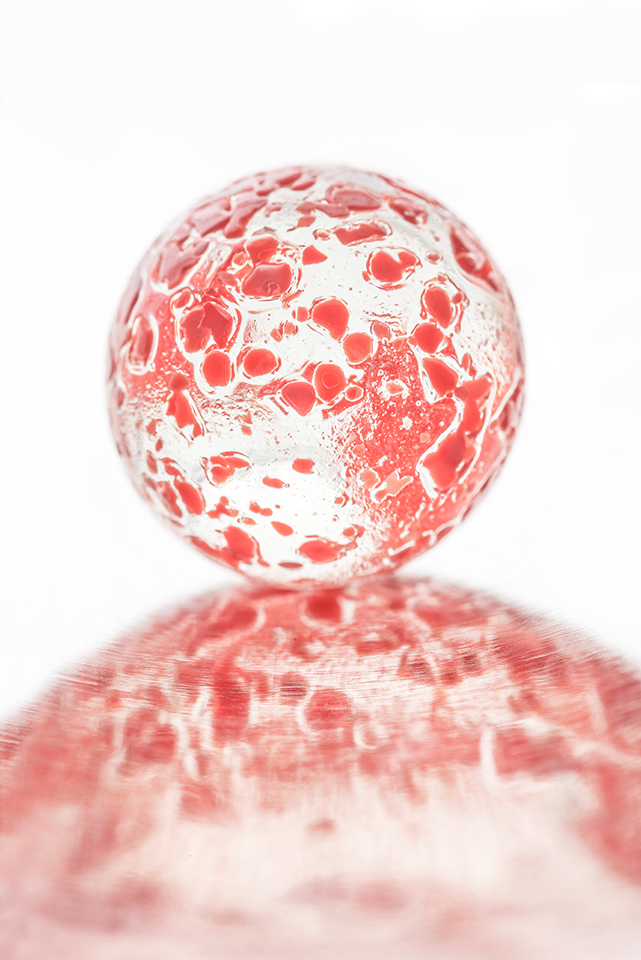
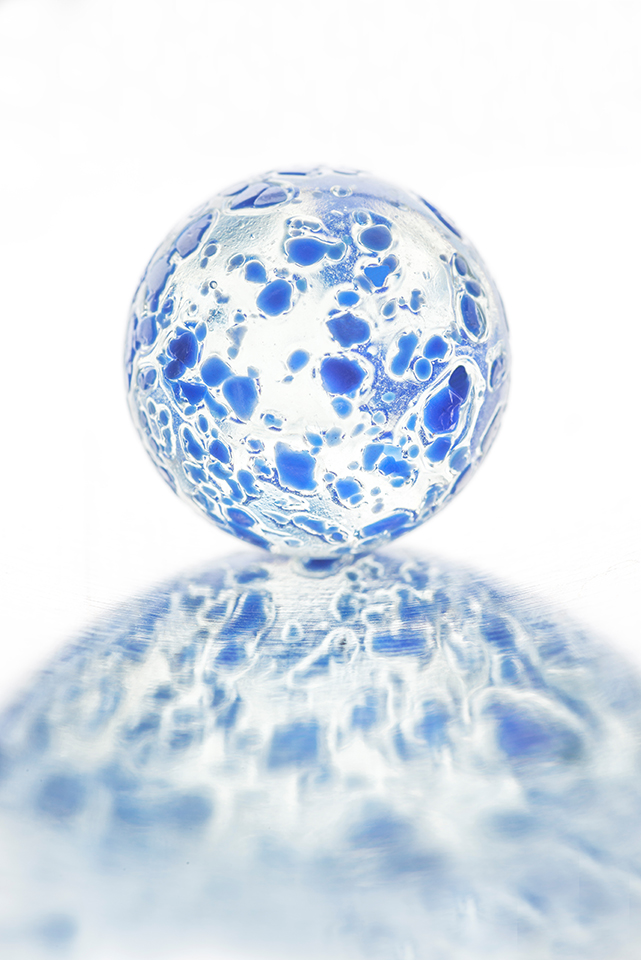
It took me a while to refine the method and edit the photos, and in the meantime I had taken Joel Grimes’ Still Life Masterclass. Joel got some incredible photos of mundane objects with just one light. He calls it “cross light” and when I heard it at first, it sounded too good to be true. The light is placed at ninety degrees and in front of the subject. With a softbox, the large light can wrap around the subject and give an amazing gradation of tones. You can adjust the contrast to taste with a reflector on the other side.
I wanted to see how this lighting scheme worked with marbles, and the rest of the pictures in this post were lit with a speed light in a soft box at ninety degrees, camera left, and a piece of white foam core used as a reflector. I still had some A4 coloured and transparent perpex sheets to put the marbles on.
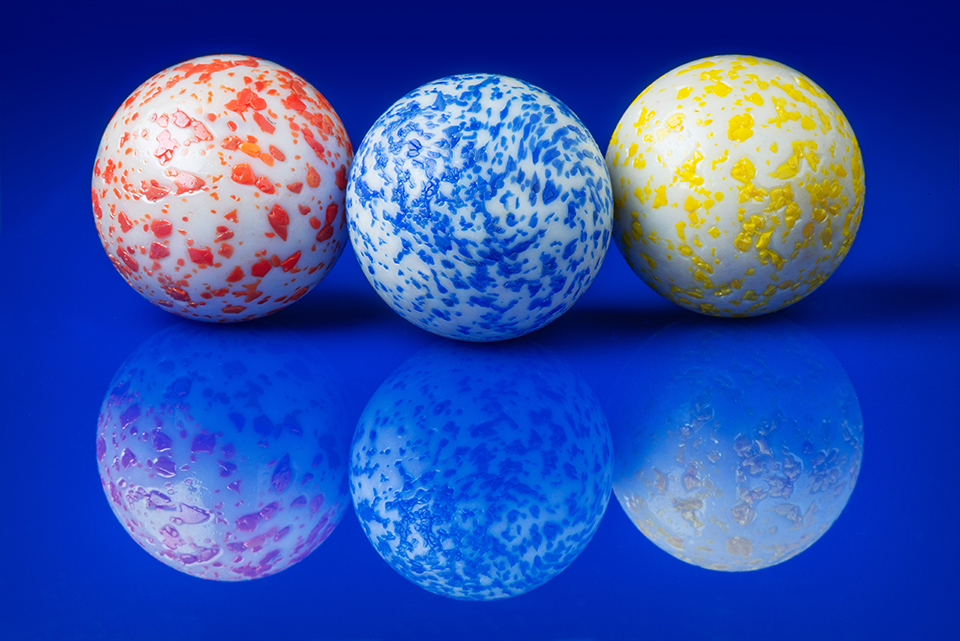
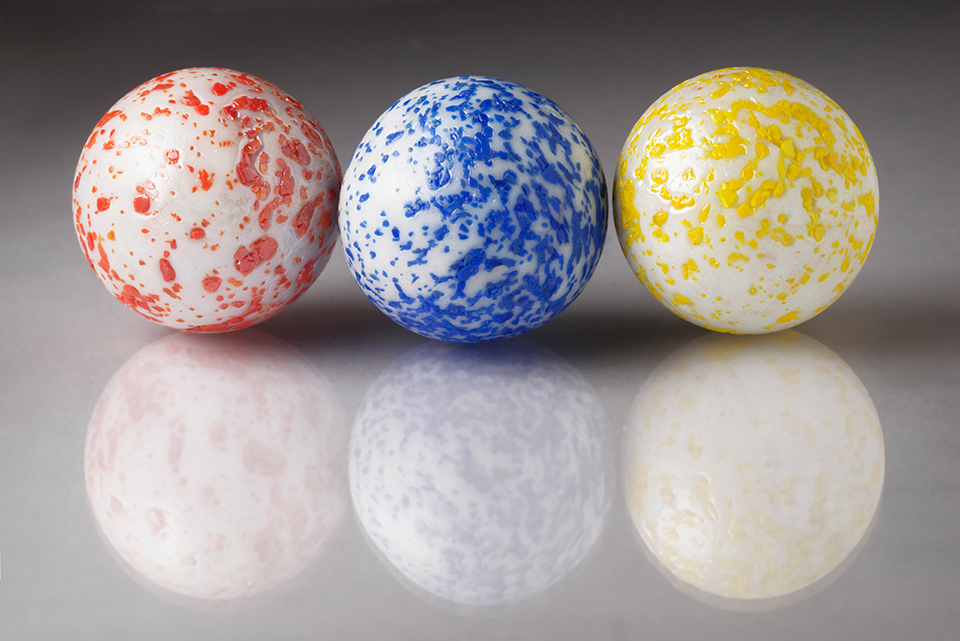
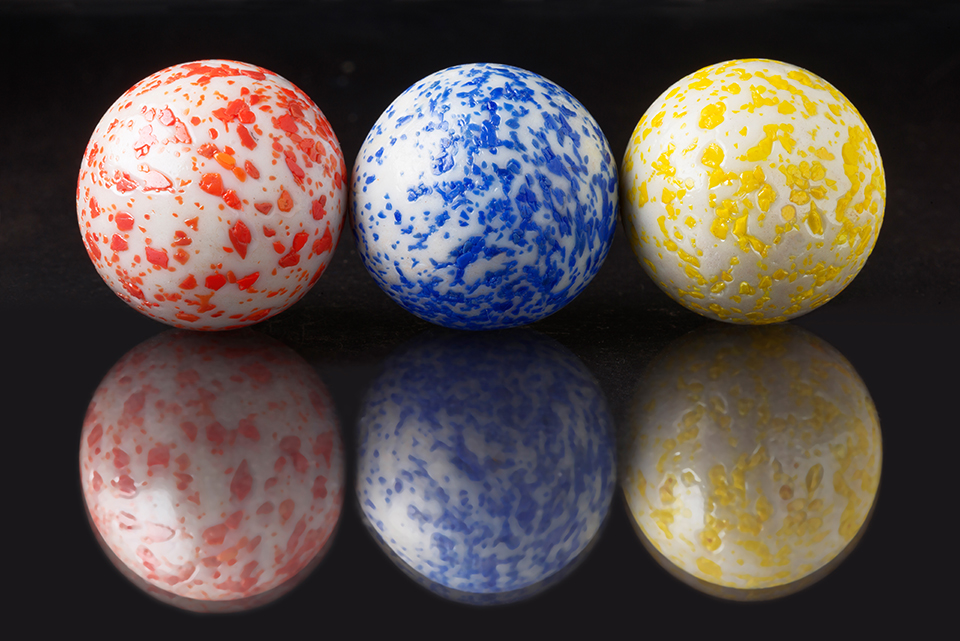
Next, I chose a background and picked marbles that I thought would work well with that colour. I first picked blue.
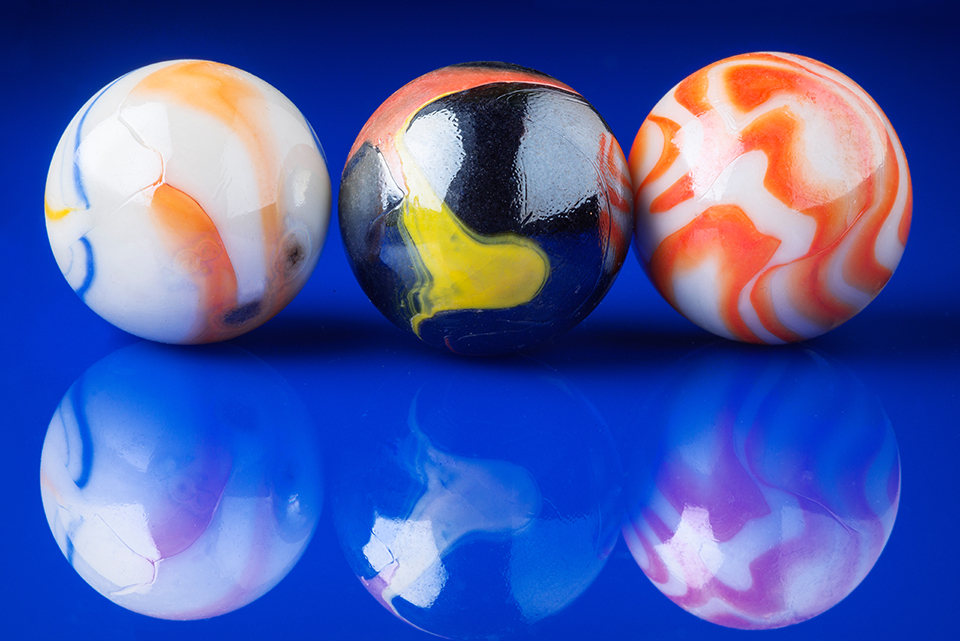
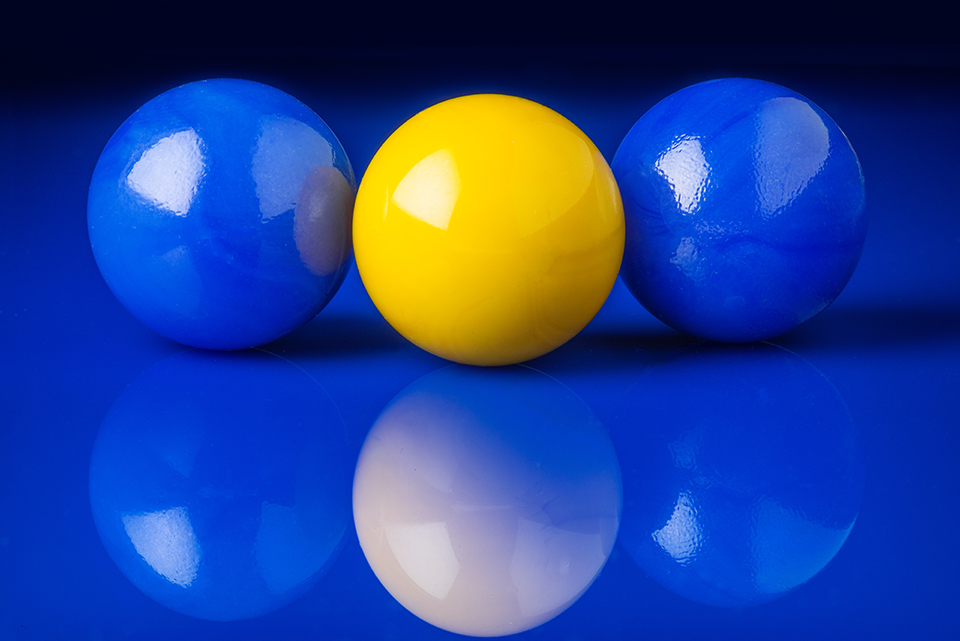
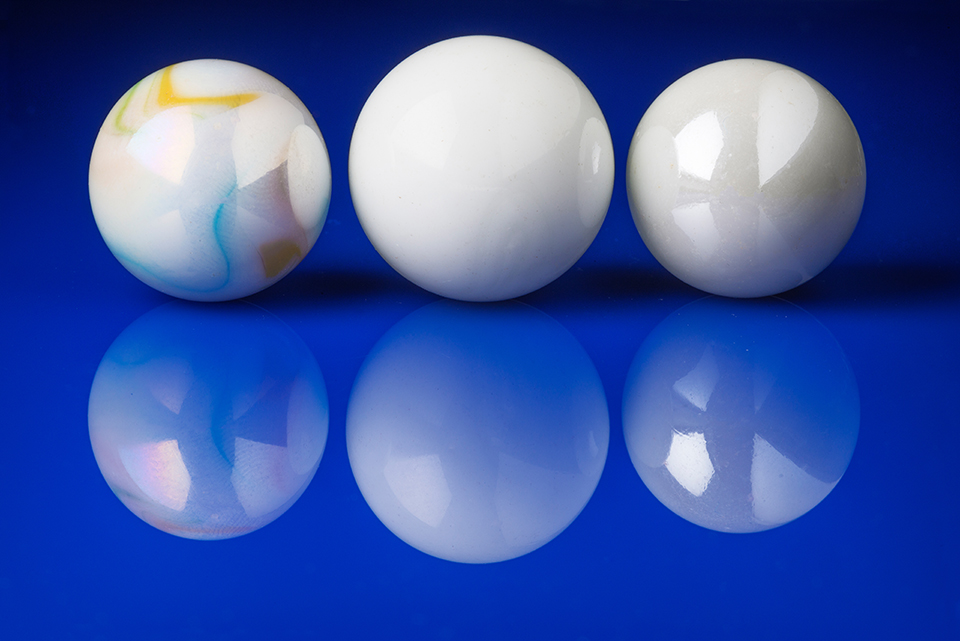
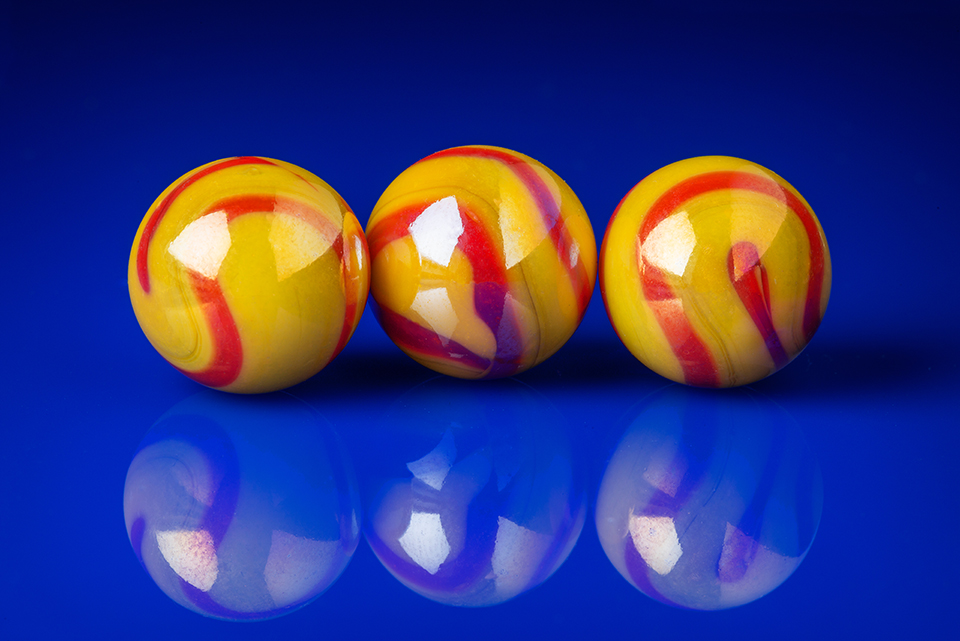
The next “colour” I tried is white.

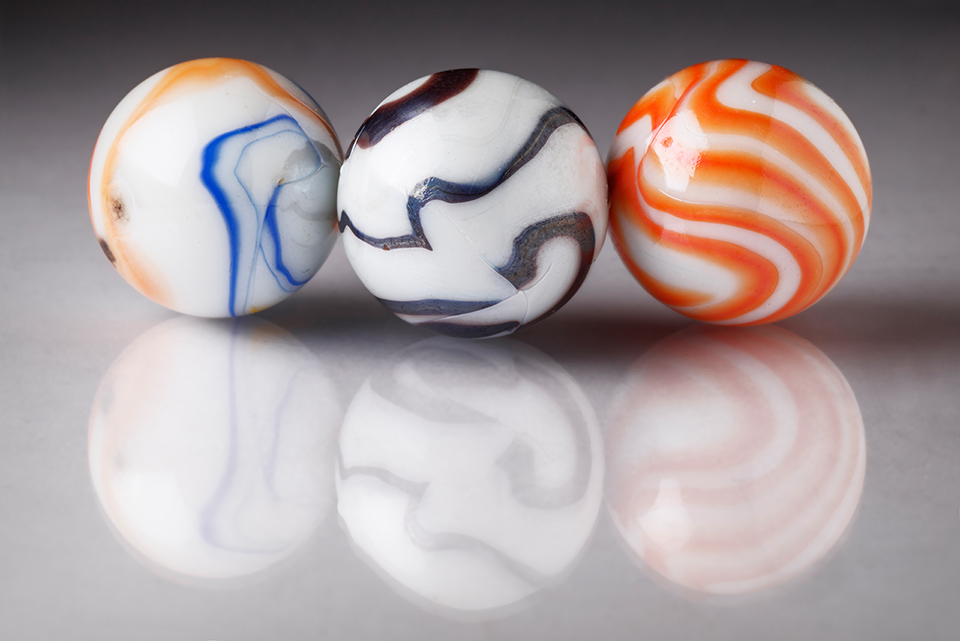
The obvious choice after white was black.
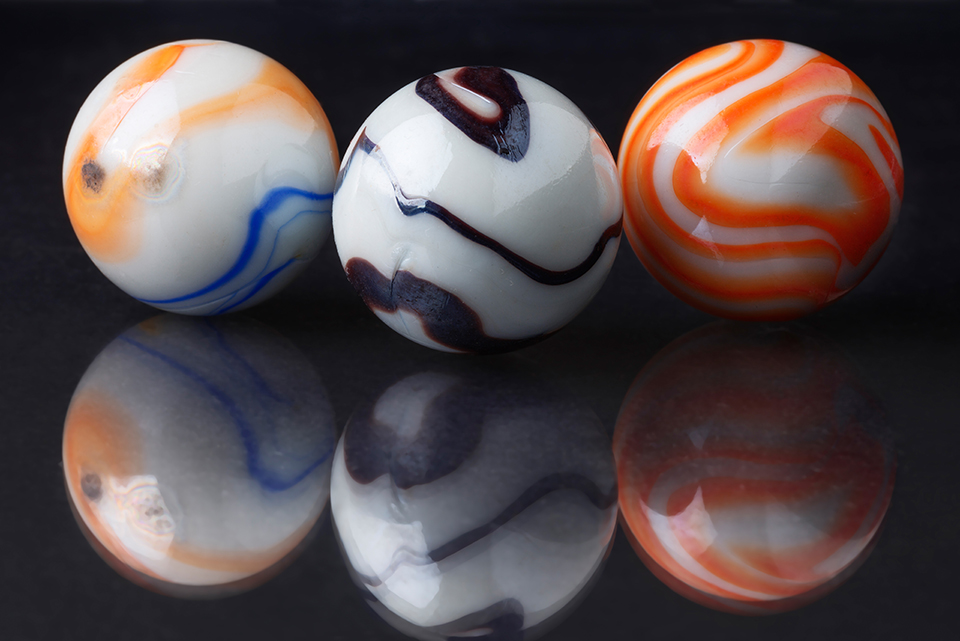

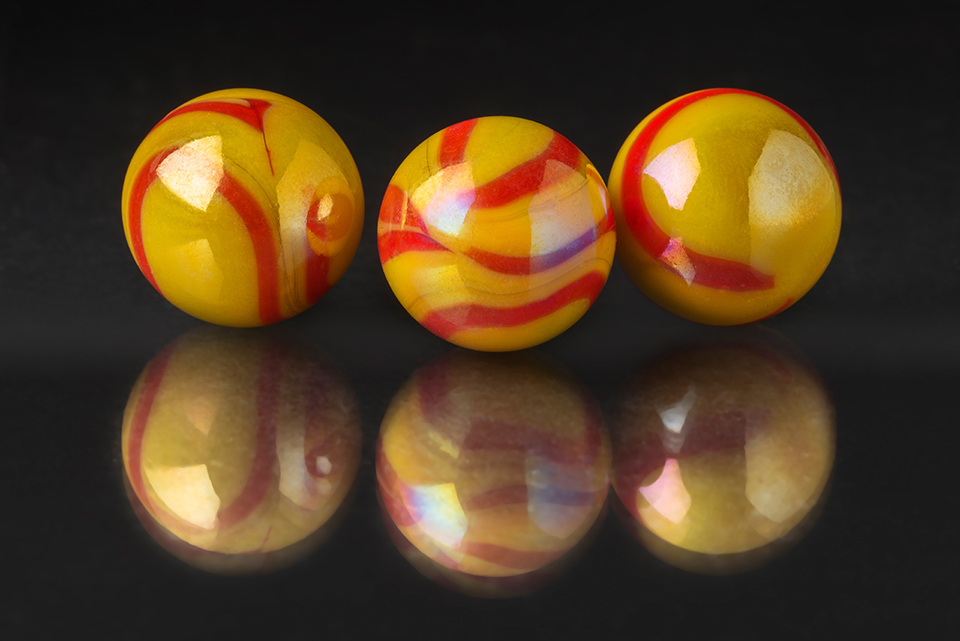
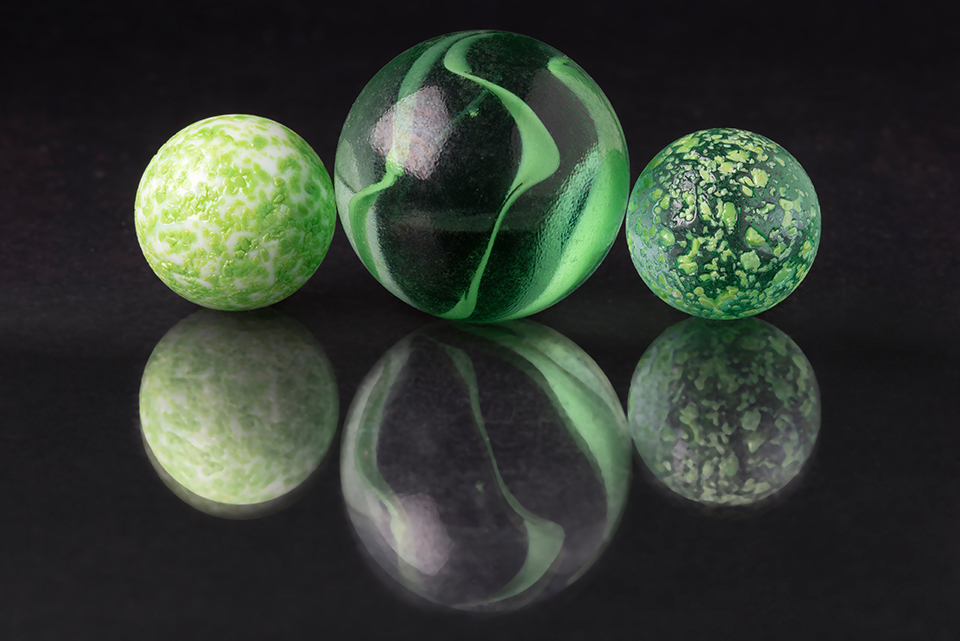
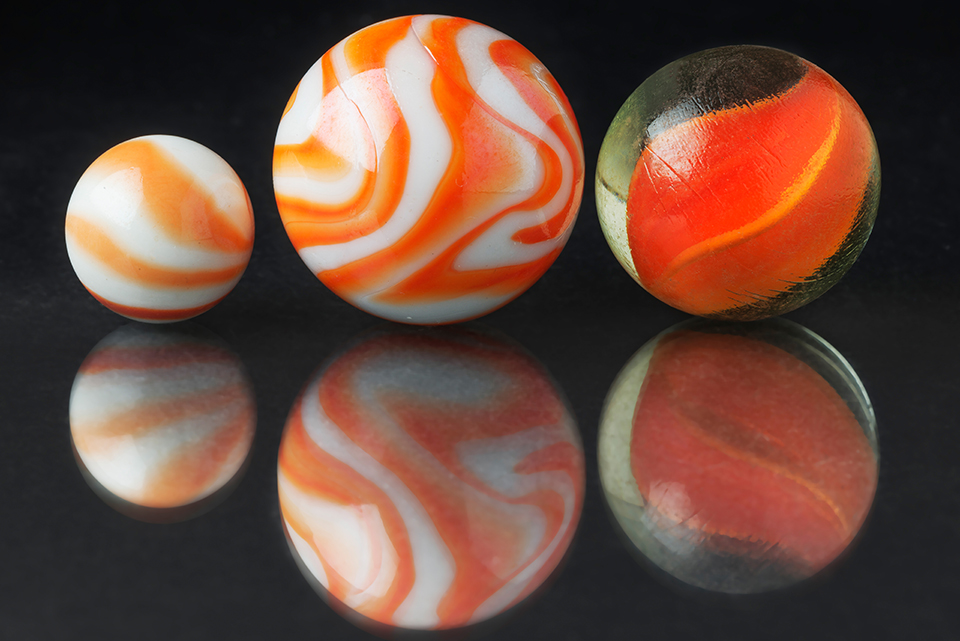
I then did a couple of combinations on a yellow background.
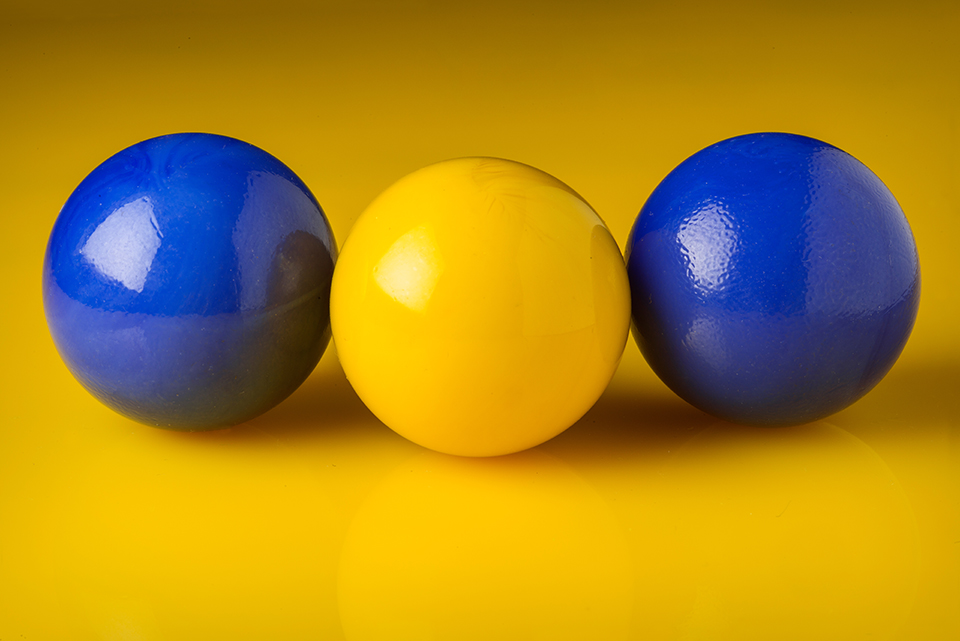
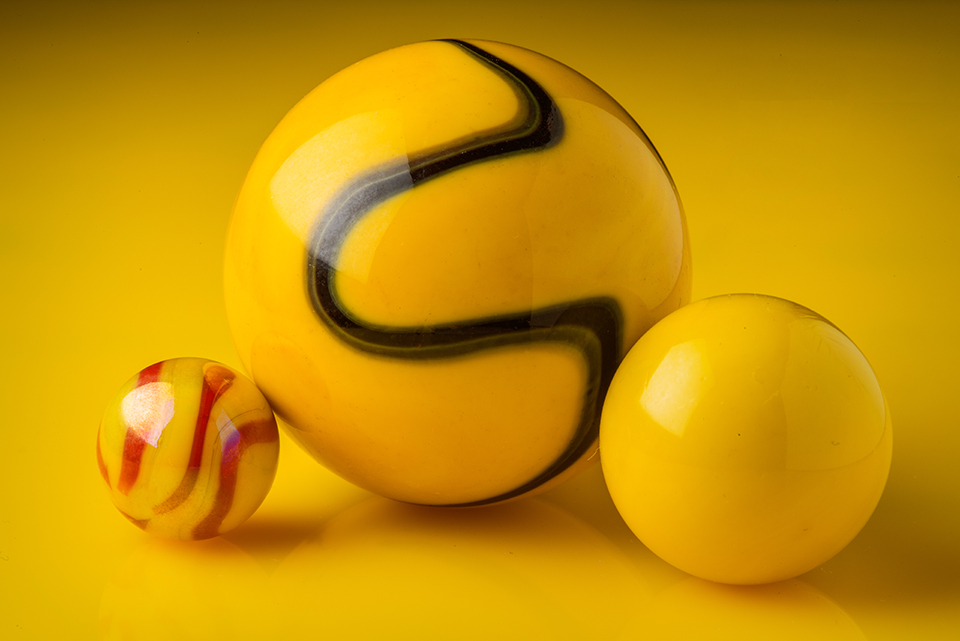
Since I wasn’t too fond of the yellow background, I moved to my final set ups, using an orange sheet of plexiglas.
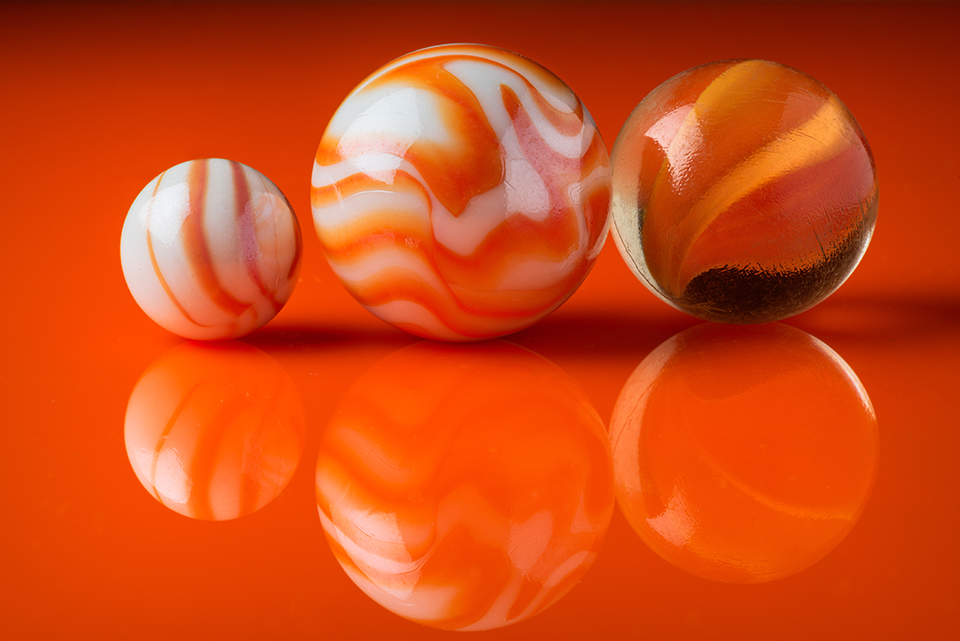
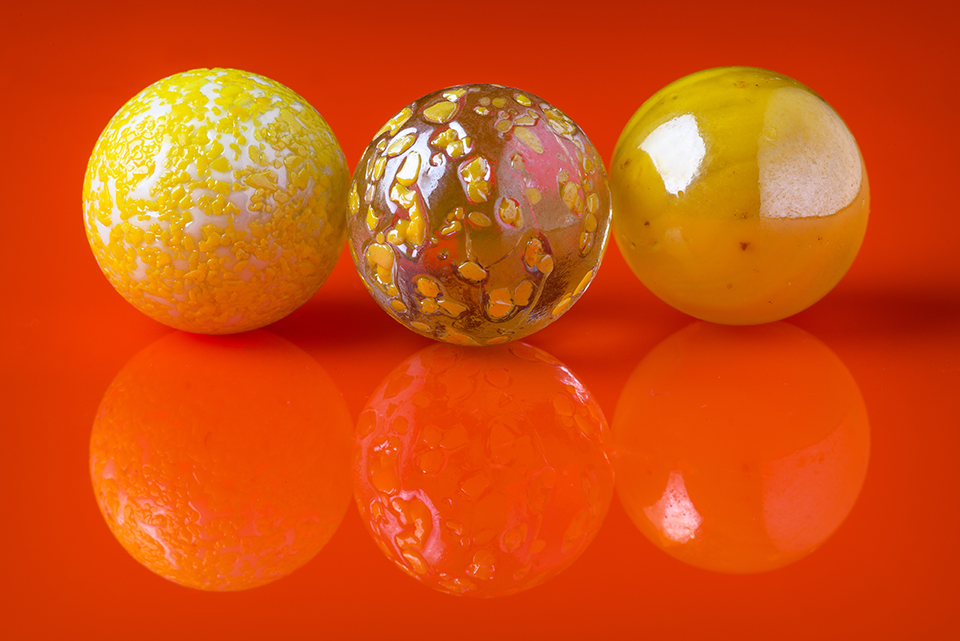


Share this content on


